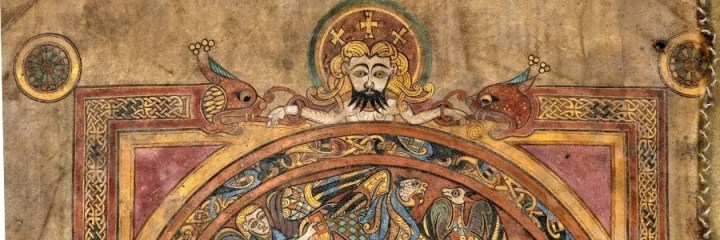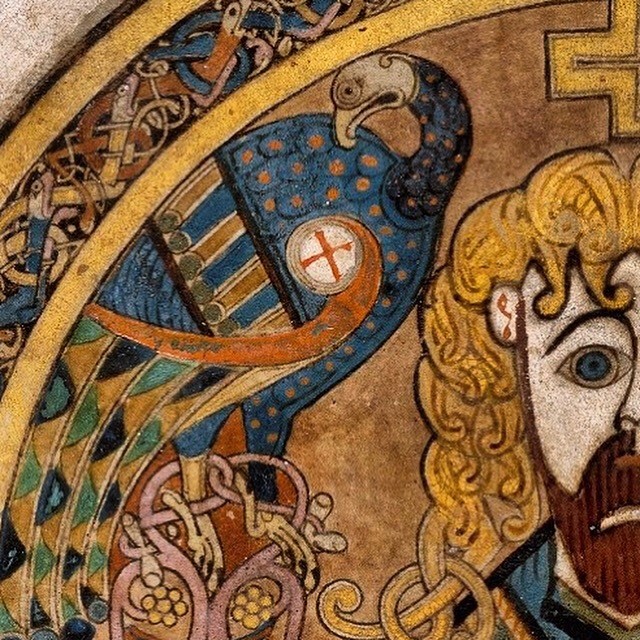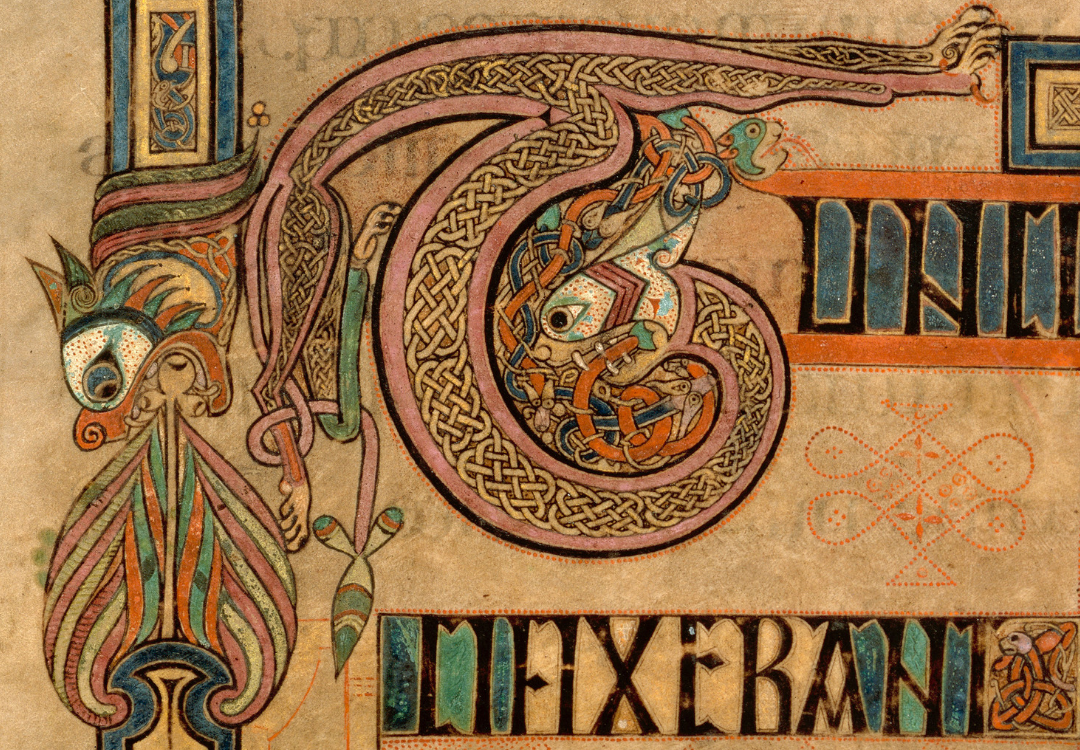
Easter is a special time of the year to marvel at the Book of Kells, since it is full of intricate symbolism referencing the Resurrection of Jesus Christ.
Animals play a big part in this symbolism, with Christ’s resurrection and immortality being referenced through intricate illustrations of lions, snakes and peacocks.
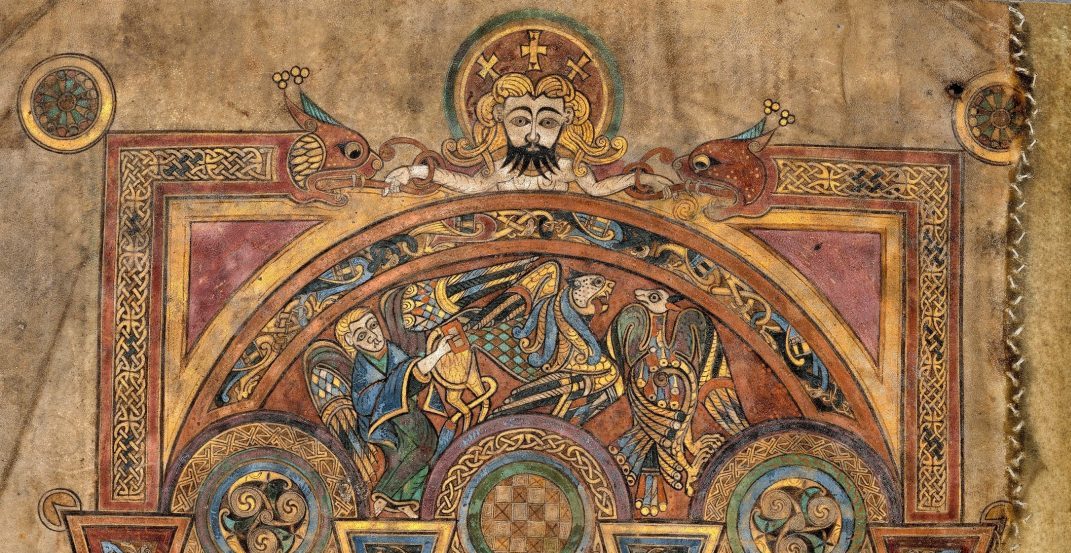
In folio 2v, Jesus Christ grips the extended tongue of a lion on either side of him. The scene is thought to represent the Crucifixion, when Jesus hung on a cross between two thieves. The three yellow crosses that feature on Christ’s halo are also symbolic of the Crucifixion.
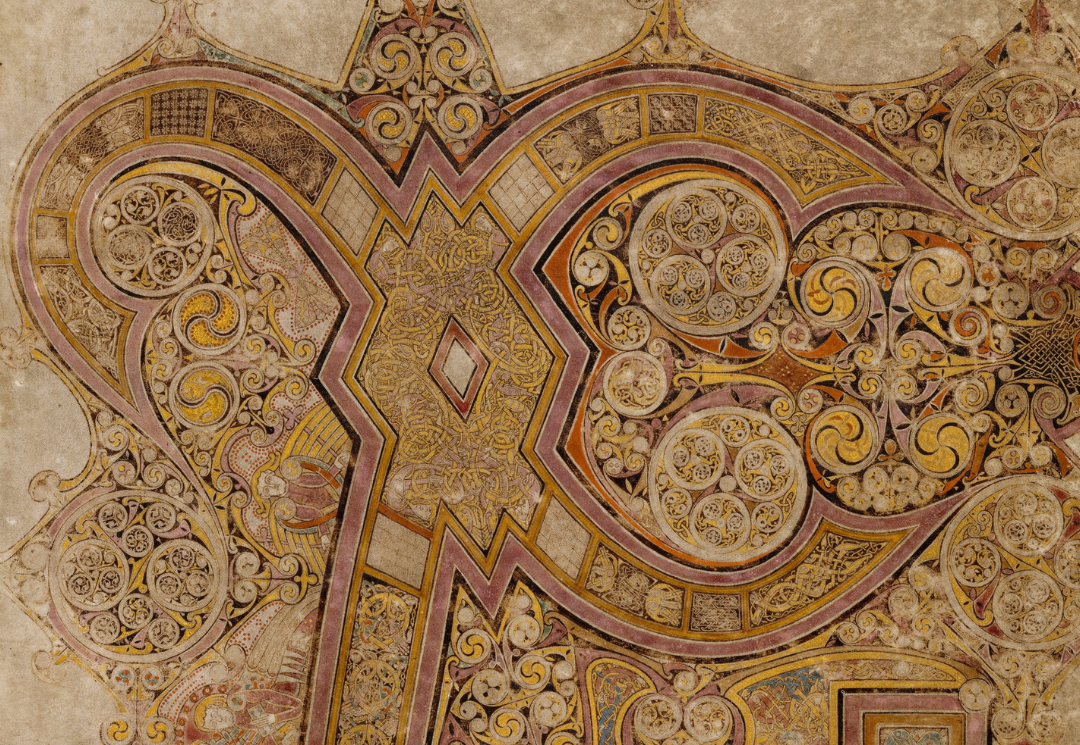
The Chi Rho page (folio 34r) is the most elaborate page in the Book of Kells and features a multitude of snakes twisting and curving across the page. Since snakes shed their skin to renew themselves, they are a fitting symbol for Christ’s resurrection and are widely used across the Book of Kells.
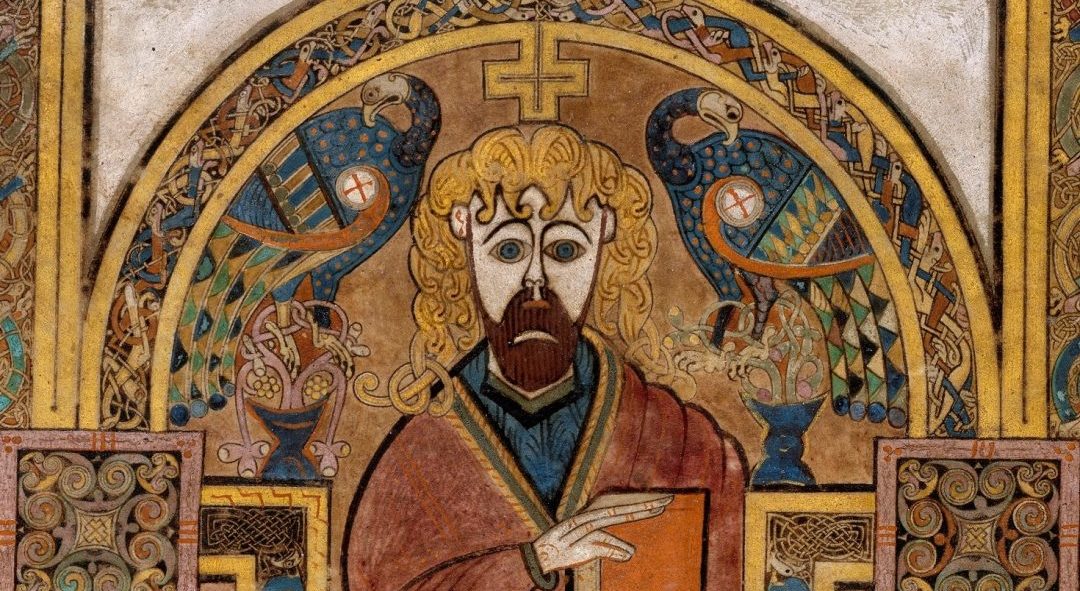
Peacocks are integral to the decoration in most of the major pages in the Book of Kells. They appear at line endings, on Canon tables and in key positions next to images of Christ. They are thought to represent Christ’s immortality, due to the ancient belief that peacock flesh does not decay.

 Easter is a special time of the year to marvel at the Book of Kells, since it is full of intricate symbolism referencing the Resurrection of Jesus Christ.
Animals play a big part in this symbolism, with Christ’s resurrection and immortality being referenced through intricate illustrations of lions, snakes and peacocks.
Easter is a special time of the year to marvel at the Book of Kells, since it is full of intricate symbolism referencing the Resurrection of Jesus Christ.
Animals play a big part in this symbolism, with Christ’s resurrection and immortality being referenced through intricate illustrations of lions, snakes and peacocks.
 In folio 2v, Jesus Christ grips the extended tongue of a lion on either side of him. The scene is thought to represent the Crucifixion, when Jesus hung on a cross between two thieves. The three yellow crosses that feature on Christ’s halo are also symbolic of the Crucifixion.
In folio 2v, Jesus Christ grips the extended tongue of a lion on either side of him. The scene is thought to represent the Crucifixion, when Jesus hung on a cross between two thieves. The three yellow crosses that feature on Christ’s halo are also symbolic of the Crucifixion.
 The Chi Rho page (folio 34r) is the most elaborate page in the Book of Kells and features a multitude of snakes twisting and curving across the page. Since snakes shed their skin to renew themselves, they are a fitting symbol for Christ’s resurrection and are widely used across the Book of Kells.
The Chi Rho page (folio 34r) is the most elaborate page in the Book of Kells and features a multitude of snakes twisting and curving across the page. Since snakes shed their skin to renew themselves, they are a fitting symbol for Christ’s resurrection and are widely used across the Book of Kells.
 Peacocks are integral to the decoration in most of the major pages in the Book of Kells. They appear at line endings, on Canon tables and in key positions next to images of Christ. They are thought to represent Christ’s immortality, due to the ancient belief that peacock flesh does not decay.
Peacocks are integral to the decoration in most of the major pages in the Book of Kells. They appear at line endings, on Canon tables and in key positions next to images of Christ. They are thought to represent Christ’s immortality, due to the ancient belief that peacock flesh does not decay.
